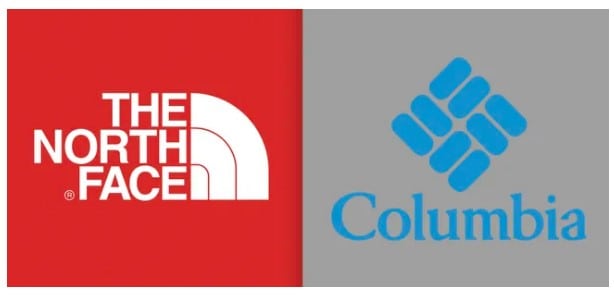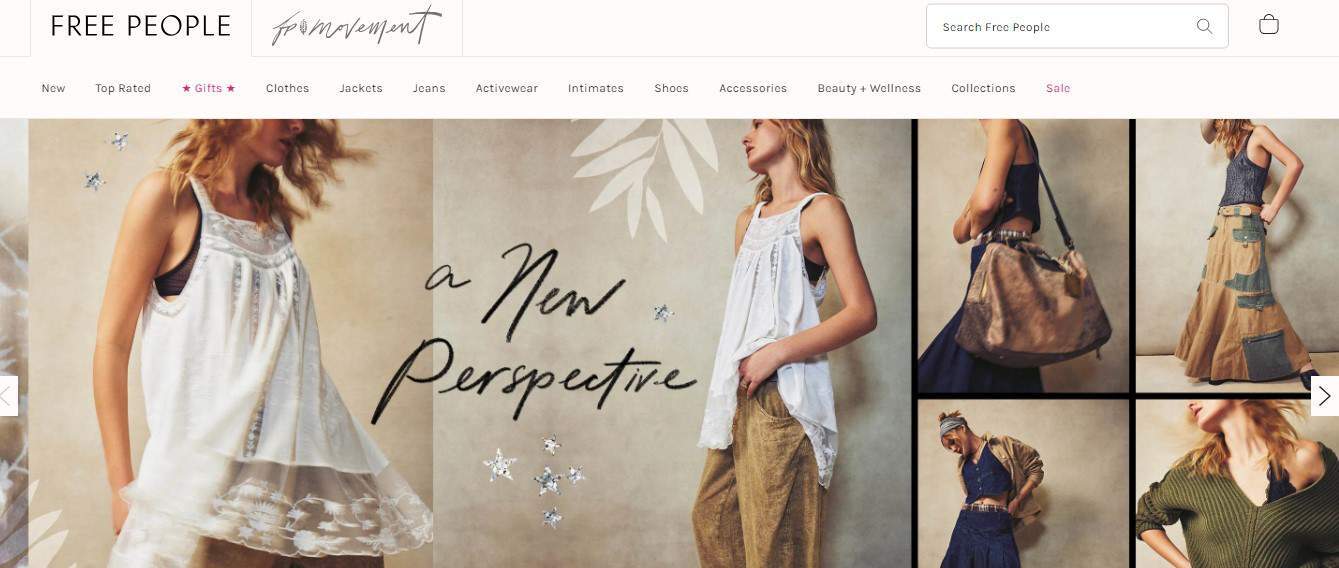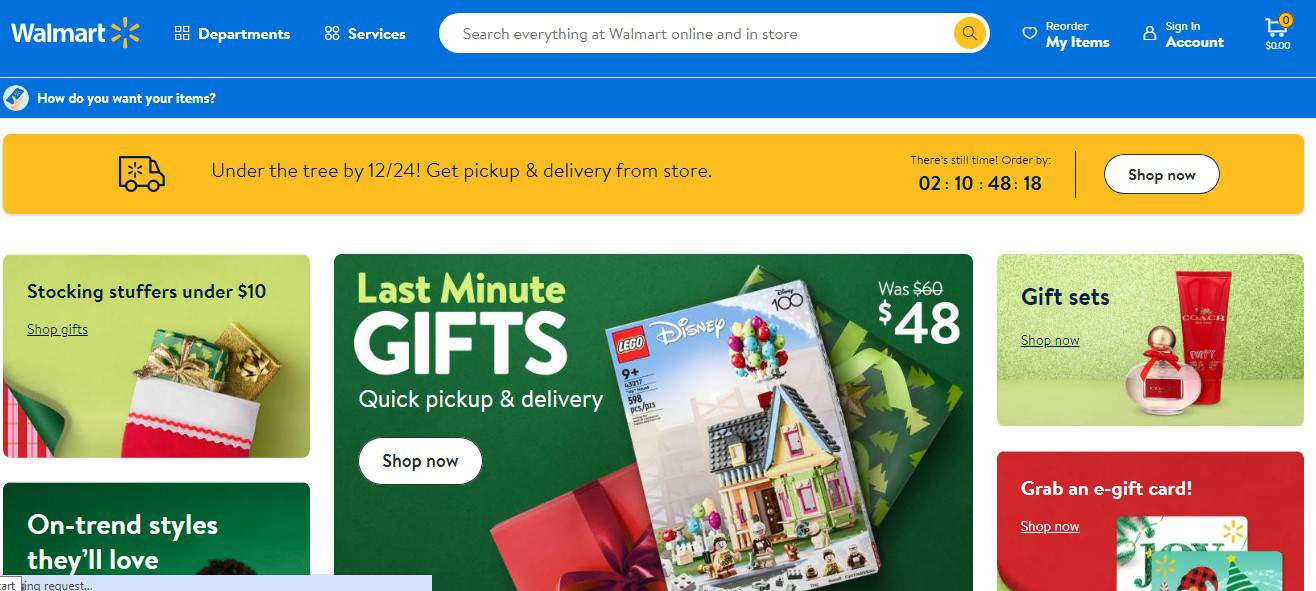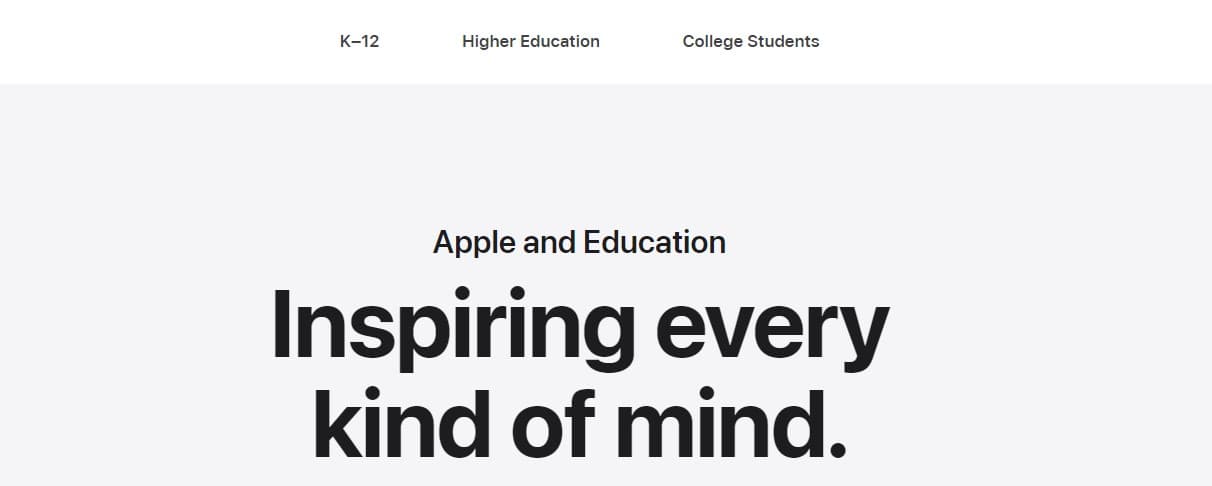Why do customer demographics take the headline in marketing now and then? Let’s say you’re sitting at a dinner table, ready to share the highlights of your vacay. On one side is your best friend, the confident one, who is always up for an adventure. On the other side is your mom, the caring, wise soul who’s seen it all.
Now, think briefly — would you narrate your story similarly to both?
No, chances are, you’d tailor your stories to your audience.
You might dive into the nitty-gritty with your best friend, reliving every moment as if they were right there with you. But when it comes to your mom, you’d likely opt for a more concise, general overview, sparing her the problematic details of your stunts.
It’s our second nature to adjust our messages to suit our audience instinctively:
- Preferences
- Interests
- Personalities
With customer demographics, we bring this natural skill into marketing, where the art of communication can make or break a brand’s success.
In this blog post, we’ll talk about the science and strategy behind understanding your audience — the customers who form the lifeblood of your business. We’re diving deep into customer demographics and their pivotal role in shaping business strategies and campaigns.
Moreover, we’ll tell you how your CRM can unlock the potential of demographic data with customer profiles.
Table of Contents
Customer Demographics and Their Types
Customer demographics help marketers identify certain subsets of target audiences with segmentation using readily available data. Customer demographics divide a market into groups based on shared characteristics like:
- Age
- Location
- Education level
- Profession
- Income
And more.
Demographic segmentation makes it easy to tailor your marketing plan to reach a certain subset of consumers, offering more personalization. Let’s look at some types of common customer demographics that marketers often use for hyper-targeted campaigns.
Age, generation, and stage of life in customer demographics
Knowing the age and generation your customers fall into is crucial. You may maximize the efficacy of your advertising and marketing by tailoring it to each group. They all share unique values and interests.
You may divide the target audience by age in the following ways:
- Age:
- 13-18
- 19-25
- 26-30
- 31-40
- 41+
- Stage of life:
- Children
- Young adults
- Adults
- Senior citizens
- Generation
- Baby Boomers
- Generation X
- Millennials
- Gen Z
You won’t target two groups the same way. For example, the lawn and garden industry pushes container gardening and elevated bed gardening for Baby Boomers. The idea is to garden without bending down.
However, they may need to tailor their methods to Gen Z’s ideals and lifestyle to attract younger customers. They may emphasize repurposed materials, organic farming, and carbon reduction.
Gender dynamics in customer demographics
Gender-based marketing splits your target audience into identified genders and bases your communications on their preferences. A simple example: the blue and pink razors!
However, we advise businesses to tread carefully while using gender dynamics in their marketing efforts for two reasons:
- Research shows that 50% of millennials identify gender as a spectrum. Marketing messaging based on gender stereotypes can be offensive and may hurt your brand’s reputation.
- Gender roles are shifting. Men as family breadwinners and women as homemakers are things of a long gone past. Both men and women work now. They divide chores and responsibilities equally. It would be a mistake to use a gender stereotype that doesn’t fit today’s world.
When planning a marketing strategy, you must let go of some of your preconceived notions about gender and base it on reliable data. Instead of using gender stereotypes, tailor your communications to people’s interests.
Here’s a good example: Free People primarily markets to people identifying as female between 18 and 34. Their sense of style is eccentric or bohemian.
The company showcases celebrities fashioning a bohemian look as part of its social media marketing effort and provides links to apparel items that customers may use to achieve the same appearance.
Income in customer demographics
People use a part of their income to pay for necessities like food, housing, transportation, and healthcare. The amount that remains after taxes and other “needs” is discretionary income.
When you gauge the income of your target audience, you want to know a person’s ability to spend money on “wants.” These things aren’t essential to survival but contribute to their standard of living. What you want to know is their purchasing power. It increases in direct proportion to their net income.
Businesses like Walmart target middle-class and lower-class consumers with limited spending power.
On the other hand, the wealthy are the primary customers of luxury automobile dealerships. Some businesses cater to more than one kind of customer with their diverse product offerings.
One way to find out the income demographics of your target audience is to send out surveys asking about the combined income of households. You may give a range of options to understand their purchasing power, such as:
- Up to $10,000
- Up to $40,000
- Up to $60,000
- More than 80,000
And so on.
Educational background in customer demographics
In marketing, a person’s education degree is associated with their lifestyle and quality of life. This is why you may segment customer demographics by education level to target certain products to people with certain education levels.
Depending on the advertised product or service, respondents to education demographic questions answer about their degree, school, or major.
Apple is a good example of a company that uses educational demographic data. It advertises to students about to start college, who are likely to be in search of laptops. The ads target these students using references to contemporary pop culture and entertainment.
The company also offers special education prices to:
- Students
- Faculty
- Staff
- Homeschool instructors
- Parents
Ethnicity and cultural influences in customer demographics
Businesses may customize marketing techniques to target different ethnic groups, considering their distinct cultural preferences and values.
Their ability to grasp and appreciate cultural subtleties to accurately portray ethnic customs and values in advertising can help them appeal to a wider audience and create a reputation for inclusivity.
Creating advertising campaigns that speak to specific ethnicity can include:
- Culture-specific language and symbols
- Addressing particular topics and issues
- Working with an influential community member as a brand ambassador
Coca-Cola showcases numerous holiday campaigns that target specific ethnic groups. They use different languages and culturally varied individuals. They embed themselves in multiple cultural settings by sponsoring multicultural events and festivals.
Location in customer demographics
Where your customers live can affect their desires, requirements, and ability to purchase products and services.
Columbia Sportswear and North Face go big on marketing their jackets, boots, and other winterwear in Minnesota. These products are perfect for below-zero-degree weather. A big marketing budget for the same products won’t do as well in the hot Florida.

Companies make use of location data for a wide range of uses, such as:
- Localized marketing campaigns: Tailoring marketing content to reflect local culture, language, traditions, and preferences.
- Geo-targeted advertising: Using digital tools to target consumer advertisements in specific geographic areas.
- Local SEO optimization: Optimizing online content to appear in search results for location-specific queries.
- Community engagement: Participating in or sponsoring local community events, causes, and activities.
- Regional product offerings: Offering products or services that cater to the specific tastes, needs, or preferences of people in a particular region.
- Local partnerships: Collaborating with local businesses or influencers to increase brand visibility and relevance in the area.
- Physical presence and branding: Designing stores and physical spaces that resonate with local architectural styles or cultural elements.
Read also: eCommerce Emails — 50+ Basic and Advanced Segmentation Strategies
How to Use CRM Data for Effective Customer Demographic Segmentation
As a tool for gathering and analyzing demographic data, CRM software can help you segment the audience for ABM marketing.
Numerous physical and digital channels will contain your target audience data, including:
- Emails
- Spreadsheets
- Website analytics
- Post-it notes
- Social media platforms
- Sales directories and more
A CRM system centralizes all this data to facilitate insightful customer exchanges and evaluations.
You may organize your CRM’s customers’ and leads’ demographic data according to categories or groups with customer segmentation. You divide them based on similar characteristics and behaviors.
Customer segmentation helps you curate personalized content for each segment based on where they are in their customer journey and interest. It can significantly boost your chances of converting leads.
There are many ways to segment using customer demographics, such as:
- Put customers of a specific gender and age in one segment.
- Make another segment for customers within a particular location.
- Create a label for all the customers who have shown a preference for a certain thing.
- Group similar income/spending habits customers in a group.
- Segregate your customers based on their ethnicity or religion.
You can utilize all this data to tailor your marketing efforts to each customer based on their shared characteristics.
For example, you may launch a student discount campaign and automate a drip email campaign for a target audience between 19 and 23. Or you may establish a festive campaign for Diwali with a special offer that reaches all your Indian customers.
CRM also lets you segment your customers based on their:
-
- Order status: Group customers based on their interaction with your business into:
- First-time customers
- Repeating customers
- Loyal customers
- Inactive customers
- Customers who abandoned cart
- Customers who canceled their order
- Order status: Group customers based on their interaction with your business into:
- Product affinity: Group customers based on what products they’re interested in with:
-
- Often viewed products and their categories
- Often purchased products and their categories
- Products and categories that they’re most likely to buy more from
When combined with customer demographics, these two segments help you deliver the right message at the right time in front of the right customer.
EngageBay’s all-in-one marketing, sales, and customer support CRM is a powerful tool to benefit from segmentation methods. Using EngageBay’s CRM, you may tailor your content to every customer by analyzing their actions and trends in customer demographic segments.
It’s a good match for businesses that want to optimize their account-based marketing (ABM) efforts and align their marketing campaigns with customers’ wants.
Read also: The Art of Using Low vs High Context Marketing Strategies
How to Look at CRM Data and Profile Customers
There are four main ways in which businesses utilize demographics to inform their marketing strategy:
- For social media marketing: Research social media networks’ key demographics to see where your target consumers are engaged and accessible.
- Decide on ad spend: Figure out audience demographics of different platforms, such as radio, websites, and newsletters. Assess their media packs to discover which advertising channels will provide the most ROI.
- Use relevant visuals in marketing: Knowing your audience’s demographics helps you figure out how to brand your visuals to reach them.
- Ad and marketing placement: Your demographics help you understand where your potential customers will see your ads. Do you have a larger rural target audience? Digital platforms may not be your best bet.
With the detailed customer data stored in CRM systems, your marketing teams can launch effective campaigns across all platforms. A robust CRM can offer many benefits, such as:
Make a clear picture of the targets: CRM segments customers by their old transactions, browsing and purchase behaviors, demographics, etc. With reliable, comprehensive data, you can identify your target audience more precisely.
Align team efforts: CRM is useful for ensuring alignment between marketing and sales teams. They can work together more effectively, sharing vital customer information to simplify their customer experience.
Implement automation: CRMs automate mundane administrative tasks, such as:
- Data input
- Updating contact records
- Sending follow-up messages
- Managing workflows
- Supporting customers with chatbots
Improve your campaign planning: CRM lets you see your consumers from every angle and learn more about them with comprehensive data. You can create personalized marketing efforts suited to your target demographic’s needs.
Content personalization for different channels: You may provide personalized content and offers across channels with the help of CRM data.
Keep in touch with customers promptly: With a SaaS-based CRM solution, your salespeople may access customer data in real-time from anywhere. Mobile devices allow staff to react to customers and lead from anywhere.
Measure your performance: A CRM gives real-time consumer feedback on your brand’s content. You may use its analytics to evaluate the campaign and adjust for better results. This rapid advertising performance assessment improves and optimizes campaigns.
McDonald’s dominates the food service industry with more than 40,000 establishments globally. Let’s look at how McDonald’s uses its CRM for demographic intelligence:
McDonald’s CRM handles numerous customer interactions. It analyzes consumer data from various retail locations. McDonald’s stands out from the competition because it caters to certain demographics and geographic areas with:
- Appropriate restaurant layouts
- Distinctive menu items
- Personalized service
- Overall customer experience
McDonald’s may deduce the tastes of certain demographics by analyzing customer demographics data collected in its CRM. They may use this data to:
- Fine-tune their recipes
- Cater to individual cultural and traditional norms of service
- Market to appeal to a wide range of populations in a specific location
For example, McDonald’s provides localized menu options in many nations, such as:
- Osaka Okonomiyaki Burger in Japan
- McRaclette in Switzerland and France
- Chicken McDo with McSpaghetti in The Philippines and more!
Create customer profiles using demographic data
By now, you know that you can use CRM data insights to determine customer demographics for segmentation. Here are the steps you may use to create customer profiles that’ll guide you to launch targeted marketing campaigns on various platforms:
Step 1: Outline customer types
The first step to creating a customer persona is to outline a customer type. Make a list of all the demographic information about your target audience that is pertinent to your products and services, including their:
- Age
- Location
- Gender
- Any additional relevant information we covered earlier
You should be able to access this data easily with your CRM and use it to determine the best match for your company’s product or services. With this, you’ll be well-positioned to understand how your business can drive value for them.
- Place your product as precisely as possible, working your way down from a broad audience and narrowing it down.
- Determine where in the market you would encounter your ideal customers.
- Focus on a certain niche or specialization to reach your target audience.
- Find out things like their location, yearly salary, etc.
- Commence the process of creating a comprehensive customer profile using all the customer-type criteria mentioned before.
Step 2: Identify patterns
The next step is to identify patterns within the data you have collected. Benchmarking the data above against your current marketing plan will allow you to create the perfect sales funnel for your ideal customer.
Say you find that five dads aged 40+ bought your product in the same period two college students did. A marketing plan that appeals to the middle-aged male demographic will yield better results.
The idea is to start broad and narrow until you pinpoint your ideal customer’s problem. Then you will know:
- What to offer them
- How to offer it
- Where to catch their attention
Analyzing patterns can serve another function: identifying a new and growing customer base.
Step 3: Build buyer personas
You do not sell products or services; you solve problems to build long-lasting customer relationships. To do so properly, you need to know your customer thoroughly.
The same approach works even for B2B businesses. Why? Businesses are extensions of people. You want to reach the person who decides to clinch a B2B deal.
Determine who you want to attract and construct a buyer persona around them. Identify patterns with CRM from segmented leads based on customer demographics to look for:
- Psychographic data
- Behavioral data
- Technographic data
Add that to make your buyer personas richer.
Step 4: Analyze your buyer persona and timely update customer profiles
You do not have unlimited resources to carry out your marketing plan. To maximize the use of limited-budget marketing, you have to be as efficient as possible.
As such, there must be no second-guessing involved. Once you have the customer persona you want to target, analyze it to ensure no single dollar goes to waste.
Further, you need to revisit and reanalyze your ideal client profile occasionally. Do this even if your marketing is doing well, as customers’ needs and habits change. Hence, always keep your customer profiles updated with the most recent data.
This will guide your marketing strategy in adapting to a changing buyer outlook.
Read also: Finding the Best Customer Segmentation Software: A Detailed Analysis
Use ideal customer profiles for personalized marketing
Once you have an ideal customer profile, it’s time to use that to:
- Create personalized marketing campaigns
- Improve customer experience
Once you know your target customers, you can adjust your marketing plan and create highly tailored and targeted campaigns. This is important if your company wants to use an account-based marketing (ABM) strategy.
The ABM strategy can contribute greatly to marketing success, especially for SaaS companies. However, a relevant ideal customer profile (ICP) is a need for the ABM strategy. ABM allows for targeted and helpful content, which makes your customers feel like they’re under the spotlight. How do you do that?
- You identify ideal accounts that match your ICP
- Create a list
- Target with campaigns tailored to their tastes
When done right, you satisfy your target’s particular needs. By providing your potential and existing customers with content suited to their tastes, you can ensure:
- Better buyer engagement
- Increase buyer return
- Attract new customers
How Nike goes beyond customer demographics in segmentation

Leave it to Nike to deliver a masterclass in every marketing campaign. One of their most successful campaigns comes from meticulous identification and vigorous targeting of the female demographic.
Nike realized that women have distinct athletic and comfort needs. So, instead of focusing on all athletes simultaneously, Nike developed a separate line of products focused on female athletes.
Nike uses:
- Designs that fit the female anatomy
- Styles that resonated with most female tastes
- Emphasized empowerment and inclusivity
- Marketed with tailored campaigns toward women athletes
Nike debuted pants studio, a women’s athleticwear Sales Zone, and online matching at the tail end of 2017 at five thousand of its brand locations. Among the nine athletic trousers introduced by Pant Studio are the essentials:
- Training tights
- Running tights
- Running pants
Nike released women-specific Air Jordan I SOH models in 2018 and women’s universal sizing for several iconic pieces. Jordan sneakers show how pervasive shoe culture is and save ladies the trouble of getting the wrong size.
Nike women’s clothing senior design director Jamie Lee stated:
“in addition to adding styles, we offer a variety of choices for materials, decorations, touch, belt height, length, and features.”
The company offered a fresh take on women’s sportswear categorization service design, demonstrating their genuine interest in female clients.
Result: Nike won over a loyal consumer base in the female demographic to become a dominant player in the female athletic market, contributing to significant revenue growth for the brand.
Read also: Master Customer Data: A Guide For Customer Insights
How Can Technology Offer Deeper Insights Into Demographic Analysis?
Machine learning, artificial intelligence, and natural language processing have made great strides in helping companies better understand their customers’ demands and necessities. Businesses may use modem CRM solutions to collect cloud-based data from various sources or real-time consumer behavior data to:
- Align marketing calendars
- Personalize marketing campaigns
- Develop tailored offers on their products or services
Big Data enables marketers to understand customers’ demographics, preferences, and behavior. CRM can unify this data from different sources, such as website analytics, social media, customer feedback, etc. Marketing teams may use the information gathered to:
- Maximize the potential of price options they offer
- Manage client relationships more effectively
- Cut down on customer attrition
Here are two types of technology that add potential to customer segmentation that you may look forward to:
Predictive analytics: Predictive analytics uses statistical methods to anticipate customers’ actions by examining:
- Prior interactions
- Purchase history
- Other historical data
It may reveal patterns and trends that allow marketers to predict customer behavior and launch targeted campaigns to promote a certain action.
Machine learning: CRM employing machine learning may find complex correlations in client data that humans cannot. Businesses may:
- Automate and discover new and valuable customer segments with higher accuracy.
- Create hyper-personalized marketing strategies and offer targeted messages to those particular client groups.
With increasing advancement in these two technologies, big data analytics become easier. It may help marketers understand consumer behavior and preferences for targeted marketing efforts with lesser human intervention.
Read also: Mastering Customer Data Integration: Process and Strategies
Challenges and Ethical Considerations in Customer Demographics
Customer demographics analysis is a crucial aspect of market research aimed at understanding the characteristics of a target market. However, it presents several challenges and ethical considerations worth mentioning here.
Basing your marketing campaigns on assumptions
Demographic segmentation often relies on generalizations, risking stereotyping and misinterpretation.
For instance, people stereotype millennials as ‘snowflakes’ and older individuals as technologically challenged. Such assumptions can hinder marketing efforts and alienate potential customers.
Avoid lifestyles and societal norms. Some demographic data will prove outdated if you look at it from the perspective of dated stereotypes. The traditional demographic of ‘new moms’ may no longer be accurate due to changes in parenting roles and gender identities.
Lacking cultural sensitivity
Avoiding cultural stereotypes in marketing to diverse demographics is critical. If you’re dealing with a certain ethnic group, be sure to avoid perpetuating harmful biases and consider:
- The range of beliefs
- Their values
- Important traditions
You may tailor marketing efforts to be culturally sensitive and effective by taking the following actions:
- Conduct thorough market research to understand diverse demographics’ needs, preferences, and cultural sensitivities.
- Educate yourself about the biases they face and recognize stereotypes.
- Address these stereotypes respectfully to connect with the audience.
Not overcoming the vagueness of demographic data
Demographic data, while providing basic information like age and income, often needs more insight into individual character, preferences, and values.
For example, Say you’re targeting an audience based on income. Two individuals in the same income bracket might have vastly different approaches to spending—one might prioritize luxury goods, while the other might focus on savings and budget-friendly options.
The lack of detailed understanding can lead marketers to make incorrect assumptions about consumer behavior. It may result in marketing strategies that fail to resonate effectively with their intended audience.
Additionally, demographic data can rapidly change, making it less reliable. Factors like age, income, marital status, and occupation are not static. We suggest keeping demographic data up-to-date to maintain relevancy and accuracy.
Read also: From Data to Strategy: Creating Your Ideal Customer Profile
Conclusion
Just as you wouldn’t recount your day in the same way as your best friend and your mom, businesses must tailor their messages to their diverse customer base.
Throughout this blog post, we’ve covered how you may define your audience with customer demographics. From age and location to education, income, and cultural influences, these demographics are key to resonating with your customers profoundly.
However, understanding customer demographics is only part of the equation.
The real magic happens when you harness the insights derived from these demographics through robust CRM with customer profiling. As technology advances, CRM solutions can go deeper into customer segmentation with predictive analytics and machine learning.
It can help anticipate behaviors and preferences to craft personalized marketing and sales strategies, reaching the right people with the right message at the right time.
Need help creating your ICP? We’ve got you covered. Check out our article, which offers a step-by-step guide for businesses to create their ideal customer profiles.
EngageBay is an all-in-one marketing, sales, and customer support software for small businesses, startups, and solopreneurs. You get email marketing, marketing automation, landing pages and email templates, customer segmentation, activity timelines, 360-degree customer view … the list goes on.
Sign up with EngageBay for free, or book a demo with our experts.
Frequently Asked Questions (FAQ)
1. What are customer demographics, and why are they important for businesses?
Customer demographics refer to specific characteristics and attributes of a customer base, such as age, location, income, and gender. They are important for businesses as they help effectively tailor marketing and sales efforts to target the right audience.
2. How can businesses use customer demographics to personalize their marketing campaigns?
Businesses can create highly targeted marketing campaigns by analyzing customer demographics from CRM insights. They can customize content, offers, and advertising strategies to resonate with specific customer segments, increasing the chances of engagement and conversions.
3. What are some common customer demographics that businesses use for segmentation?
Common customer demographics include age, location, gender, income, educational background, ethnicity, and cultural influences. These factors help businesses create distinct customer profiles and tailor their marketing efforts accordingly.



